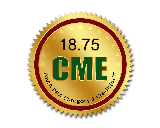
Priyanka Debta
Siksha ‘O’ Anusandhan University, India
Title: OSCC & myeloid cells (TATE & mast cells)
Biography
Biography: Priyanka Debta
Abstract
Background: Cancer is an important cause of morbidity and mortality. Oral squamous cell carcinoma is malignant neoplasm arising from mucosal epithelium of oral cavity. Despite enormous efforts to find a cure, overall survival of cancer patients has not increased and new therapeutic approaches are needed. The main barriers to successful product development are a limited understanding of the biology of tumors. So to understand the development of safe and effective cancer biotherapeutics, it is must to know each and every aspect of tumor cell biology. Bone marrow-derived myeloid cells such as macrophages, neutrophils, eosinophils, mast cells and dendritic cells infiltrate malignant tumors in large numbers and are sometimes a prominent feature in the stroma of such tissue. Aim: Evaluation of infiltration of myeloid cells (Tumor Associated Tissue Eosinophil & Mast cells) in different grades (WHO grading) of oral squamous cell carcinoma. Material & Methods: Histopathologically diagnosed 30 cases of OSCC were categorized in to: 10 cases of WDSCC, 10 cases of MDSCC and 10 cases of PDSCC. Hematoxylin and eosin stain was used to evaluate TATE & toluidine blue special stain was used to evaluate the mast cells infiltration. Follow up of cases were done for 3 years. Result: We found significant association of TATE & mast cells infiltration in OSCC cases. These myeloid cells infiltration significantly associated with age of patients but did not show any significant association with gender, site & habit of cases. When we compared these cells infiltration with clinical stages & different histological grades of tumor, we found their infiltration is decreasing; from stages 1 to stage 3 of tumor and from well to poorly differentiated carcinoma. We also found the less infiltration of these myeloid in recurrence cases of OSCC. Conclusion: We can easily evaluate the presence of TATE with routine H & E stain and toluidine blue is economic special stain to evaluate the mast cells. Thus routine assessment of these cells will be helpful to better understand their role in OSCC cases. In the future, assessment of these cells could become useful for therapeutic approach in this subset of patients.

